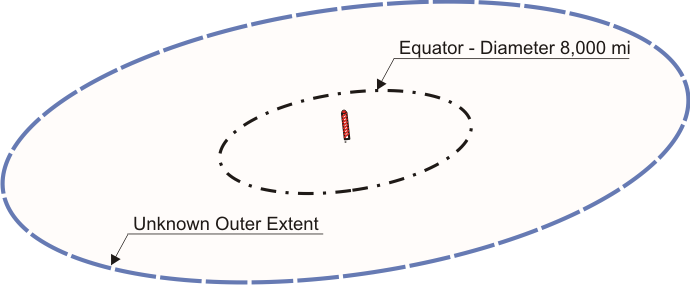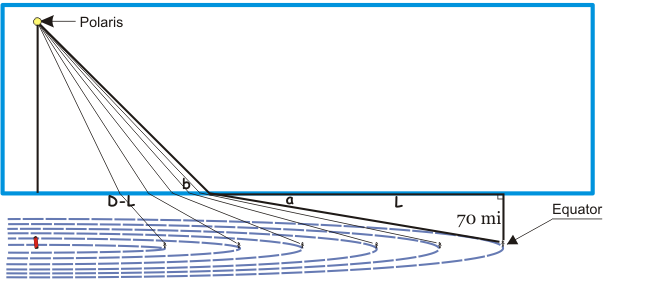
|

|

|
|
The Glass CeilingEverything we know about the universe tells us that this concept is fundamentally wrong.Somehow we picture a planet-sized glass sandwich racing around the sun in a vast universe of empty space. The whole thing is so silly that we can't even hold the idea in our head. But no, it's not like that at all. The math describes a terrarium. The physics we have been taught for a hundred years is based on misinterpretation of the data in a clever experiment by Michelson and Morley. Their idea was to measure the absolute speed of the Earth as it circled a sun in a spinning galaxy racing a million kilometers an hour around the galactic center. Many scientists, perhaps most, believed that our universe has a palpable underlying structure, a context within which matter could exist, a fundamental nature called the aether. As sound cannot travel in a vacuum, it was considered axiomatic that a medium of some description must exist to propagate light and magnetic phenomena. Colorful descriptions of the aether abound in early twentieth century science papers. Michelson and Morley divided a laser with a beam splitter, and sent light along two paths. The half-beams were recombined in a prism giving a visual readout of any differential in the virtual lengths of the paths. They could rotate the apparatus to test for differences in the speed of light along orthogonal axes. The experiment did not detect extreme velocity differences in the two light paths. Some academicians declared that this proved that there was no aether and space was empty. A large number of assumptions were made about the nature of light and the nature of matter to make the mathematics work in empty space. The proposition was far from agreed when it was made official by a group affectionately known as the Copenhagen Mafia. Einstein was their poster boy and we all grew up with the certainty that the Theory of Relativity (special as it was) explained life, the universe, and everything and the universe had ceded the last of its mysteries. Forty two. Yet if the data is interpreted without the a-priori assumption that the earth is moving very fast, we conclude that the Earth is not moving and that we have learned nothing about the Aether. In biblical creation, the Earth was immovable. The firmament divided waters above from waters below and contained the lights. Science guys are conditioned to consider such stories to be interesting legend and nothing more. We learn that primitive cultures thought the Earth was flat because they weren't as smart as we are. |
||
|
||
|
If we are to gain understanding of the universe, we must build from what we know to be true. The Earth is flat. This is not a theory like the theory of gravity, the theory of relativity, string theory or the big bang theory. The Earth is seen to be flat and is directly proven to be flat. The proof is based on geometry and the certainty that triangles remain congruent in Euclidean space. This is not a negative proof like "the curve has never been measured", although that is also true. This is not an inductive proof based on logical elements that are presumed to be related. This is a hard proof based on direct measurement. Water is provably flat. It follows that the Earth is not a spinning ball racing through empty space. If we mean to maintain a scintilla of plausibility, we must strenuously avoid over-interpretation of the data. We must begin from what is known, and weave it into some kind of platform. As no mainstream scientific description exists for any of this, we are pioneering and piece together the evidence only as best we can. This would be a good time to muster some reverent humility for the vast amount that we do not know. Many pieces form a grand puzzle. The best we can do is observe relationships and try to fit the pieces. If something doesn't work, we have to throw it out. What Little We Know1) The Michelson Morley experiment failed to measure the million kph speed of the Earth with respect to the aether.2) The Sagnac experiment conclusively proves that the aether exists. 3) The Michelson Gale experiment compared light speed in an East-West axis to a North-South axis. The differential was close to the accepted value for the Earth's rotation. 4) Airey's Failure used stellar aberration to measure relative drift in a telescope filled with air and a telescope filled with water. It was termed a failure because it did not show that the Earth was moving. In fact it was a great success and showed that the aether is moving with respect to a stationary Earth. 5) Modern gyroscope experiments show that the Earth is not rotating. The Copenhagen Doctrine says all aether based experiments were failures because they did not detect the known 1 million kph speed of the Earth so therefore there is no aether, space is empty, Relativity is proven, and Einstein was right about everything. Orthodoxy uses the Sagnac effect in ring laser gyros, but denies its importance because it employs a rotating frame of reference. Scientism-ists say that a tiny gimbal bearing must have gripped the gyroscope so firmly that it couldn't move with respect to the obviously rotating Earth. They say the Earth is so big you can't see or measure the curve, and even if you did you'd be wrong. They say that light is twisty bendy and you couldn't tell if you can see a boat on a canal. So according to orthodoxy we can't trust our eyes or our experiments because it is absolutely certain that the Earth is traveling at a million kph and we're stupid if we believe otherwise. |
||
|
As the Earth is provably flat, and so many experiments have shown it to be motionless, we see that ridicule by the mainstream is baseless. The research is not difficult so minimal effort and a tiny sprinkle of intellectual honesty would lead them also to conclude that the Earth is flat. Why do they resist so much? Why do they joust with pat and empty derision instead of just seeking truth? What have they got to lose? Everything. Like me, like you, they built their whole world view on twaddle they learned in school. We could repartee in kind and ridicule what they think they know. Frustrated as we may be by rigid thinking and vacuous arguments, we gather compassion for one whose whole intellectual paradigm is collapsing. Everything you know is wrong, have a nice day. Perhaps we can expect a little bit of resistance. We all grew up with Space, the great dream, the final frontier. Science is always right and always honest, and NASA is the science agency. They tell us everything we know about space, and sister agencies like the USGS use NASA's space data to tell us everything about our own planet. It isn't as simple as changing a couple of assumptions and recalculating the model. And no, your teachers weren't lying to you. Not knowingly anyway. They taught us what they learned from their teachers. The big balls model is most intricately crafted and is elegantly described in the language of the priesthood. Mathematical incantations sing the resonances of its cosmic harmonies. But alas, the universe it describes is not the one in which we live. In this universe, the Earth is flat and immovable. Orbits are obviously impossible. Perhaps this is why NASA fakes all of their space pictures. If they have ever been to "space" they can't prove it. Their elaborate deceptions suggest that they have never been there. |
||
|
||
|
Given that our mapping services are siamese twins of the space agency, we have no certainty with respect to any measurements. However, it seems generally accepted that the equator is about 25,000 miles in circumference, so we will inscribe a circle of that size centered on the North Pole as seen above. Its diameter will be 8,000 miles and its radius 4,000 miles. |
||
|
The only major piece of available literature that describes a fixed geostationary plane under a hard barrier is the Bible. It says the earth is a circle with four corners, set immovably on four pillars. Until we climb in our personal jet and go to the ends of the earth, we can neither verify nor disprove this. The biblical creation story says the sun, moon and planets are in the firmament. This perhaps is observable. We have made no attempt to apply dimensions to our conceptual model. The size of the earth is unknown in that all dimensions we have come from purveyors of the ball cosmology. It will be helpful, at least for visualization purposes to choose a dimension for the height of the sky. The sky must be well above commercial air lanes, and experimental aircraft have claimed altitudes of 65-70 miles. We know that the height can't be hundreds of miles because we would not see the measured angles on our sextant. We're making an assumption to help us see what is going on. Like the equatorial diameter chosen above, it is a starting point. I have only a single additional data point - the flight of GoFast, an amateur rocket that appeared to hit a soft barrier at an altitude of 70 miles. So here's our working model. Such dimensions as exist are simply chosen. The known axioms do not define the gap. We cannot prove its distance constant or that it is parallel to the earth plane. These cautions are given because a casually drawn diagram may imply relationships not in evidence, leading inadvertently to an unfounded assumptive basis. |
||
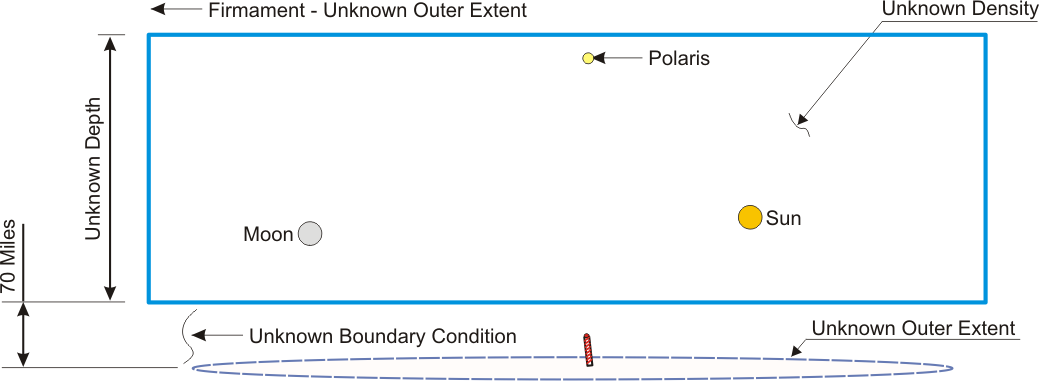
|
||
|
We know that the earthly plane holds continents with oceans between. As our sea level does not fall continually we must assume that water is contained. We cannot prove that the water is not contained by a mysterious gravitational force or barrier field. In all though it seems more plausible to believe simply that our sea level is somewhat below the height of the outer rim. We do not know the height of Polaris or the density of the firmament. Perhaps a certain combination of these factors will lead to geometry explaining the sextant-ground angle observed by mariners. The notion of a glassine firmament is satisfying in another way also as it could explain the apparent redshift we see in the points of light we call stars. |
||
|
||
|
This gives us an upper boundary, and a second refractive index depending on the density of the layer above. Testing various combinations of refractive index, we find also that this extended model does not produce the result that would explain our observations. |
||
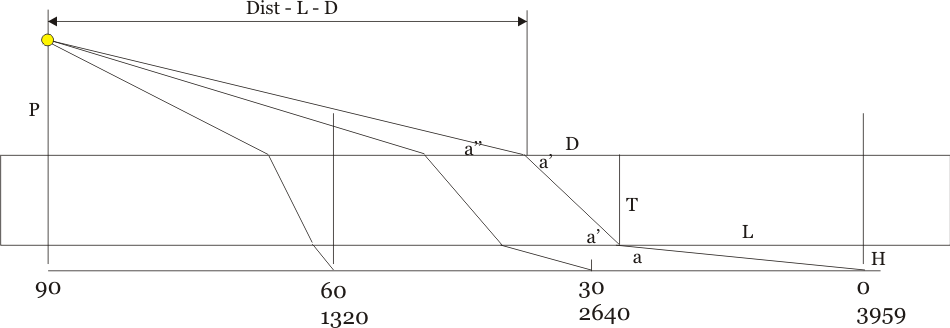
|
||
|
I investigated anisotropic media, where the refractive index varies by axis. The curve would be approximately correct but birefringence is awkward to solve and would likely lead to optical aberrations that we don't observe. Perhaps I will solve it another day. One oddity caught my attention. When the second medium was more dense than the slab, results began to converge on what we actually observe. If the density of the firmament is close to that of air at its boundary layer, and increases exponentially to a value between three and seven, we get a set of curves that approximate mariners' observations. This notion is consistent with descriptions in ancient literature and as previously observed, could lead to some method for balloon tethering. This is also consistent with the idea that rockets can't go above 65-70 miles. This is far short of a proof, and I have only begun to attempt material characterization of the firmament per se, but it leads to interesting speculations. For example, it may help to explain why the distant sun cannot be seen across the flat Earth. The bible says the firmament is a tabernacle for the sun. Current flat earth thinking implies a shaded spotlight sun circling an optically flat sky. Until we solve the optical characteristics of the firmament, we don't actually know what we are looking at when we see the sky. |
||
W. A. G.The most elite inner circles of science need a term for the noblest of hypotheses. This is as far as I have gone with my Wild Ass Guess. |
||
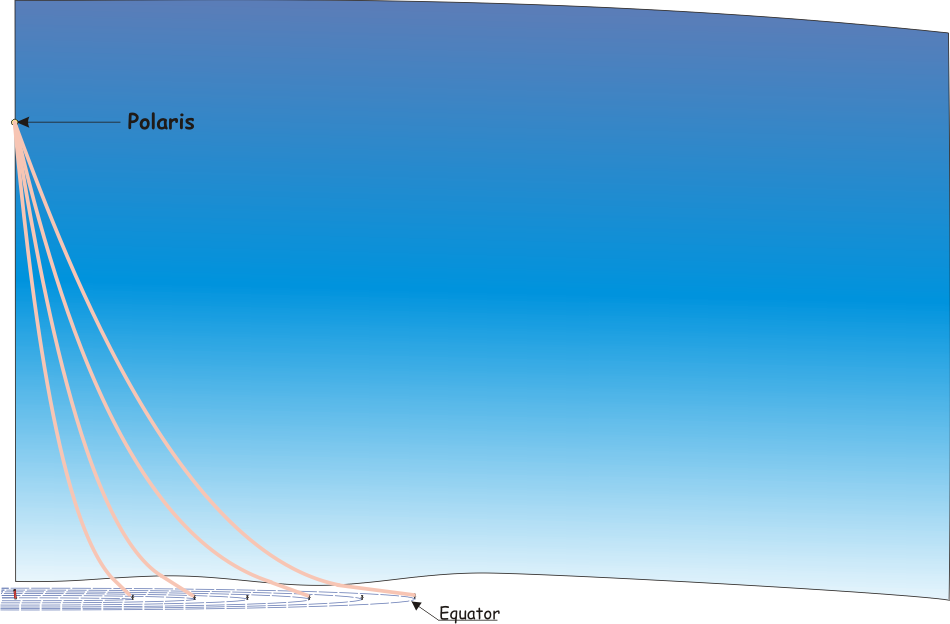
|
||
|
The refractive index of the firmament is very close to one at its lower bound. Its refractive index increases toward its upper bound. This geometry causes sight lines to follow an inverted sphere as shown. The thickness of the firmament remains unknown. Polaris could be near the top, near the bottom or halfway up. The height of Polaris is inversely proportional to the upper density limit (highest refractive index). Curve fitting experiments suggest that the the height of Polaris is between 300 and 1,000 miles and that the density limit there is between 3.5 and 7. For comparison, dense glass has a refractive index as high as 1.8, sapphire is about 3 and Diamond is 4. Some man made birefringent crystals have a refractive index as high as a5.6. This implies a boundary that feels like air at first and quickly gains density until it is utterly impassable. It appears also that the lower limit of the firmament is not exactly flat. It is unclear how we characterize the shape of a soft boundary, but perhaps it could be done with enough independent accurate azimuthal observations. |
||
|
If the near boundary of the firmament is very like air, it may be pliant. A high pressure system might perturb it upward. A powerful wind system might ripple the surface.
It seems there are more unknowns than certitudes. Of course, you may ask why I might write of it when I don't know everything. I hope my feeble speculations might trigger a memory here, an insight there. Perhaps this can begin a framework for speculation. Many of us have insights. If none have the whole picture, perhaps we can glean another layer by comparing notes. Perhaps, surveyors, astronomers and mathematicians can weigh in on the discussion. We are standing in the portal to a new frontier of science. If nothing else perhaps we can dismiss the hubris of forty two and begin to ask cogent questions. Where is the glory of discovery if everything is already known? We are on the precipice of a new age of mystery. We have learned some of the truth about the world around us. Simple observation and uncolored interpretation is the doorway to a new era. We know we have been lied to about the most fundamental things. We know we cannot take the liars' word for the rest of it. We must find ways to test, prove and measure. Today's science is a faded photocopy of the passions of Faraday, Bohm, Tesla and Maxwell. We begin as children with a cosmology that is honest, if almost entirely unknown. Yes, the standard model fails like the Hindenberg, and it is our destiny now to replace it with a true foundation. Oh, what we might learn! Modern scientatheism has it that the Earth is an insignificant dust mote in the Goldilocks zone of a grand universe that came from nowhere and gradually accreted by gravity and randomness into rare and special conditions for life to emerge from the cosmic soup. We know its exact age and mass and that it will eventually lose all higher order to entropy and turn to gray goo. Abundant evidence implies intelligent design, the new age euphemism we use when peers may hear and we must avoid the "G" word. As foolish as the big bang theory is, many people seem to believe it as literal truth. But the terrarium model does not appear random. It cannot be proven that this terrarium is not one of billions, but on the face of it, some entity must have cared enough about us to build this one. As to the idea that life is rare... It seems ubiquitous here. And oddly related. Skeletal structures, nervous systems, and organizational details seem to be shared among all manner of living things though species be quite different. Darwinists say we all evolved from the same primordial amoeba. Yet all manner of analysis implies more a template than a common origin. Randomness seems to have no place in the order of things, though science prefers probabilities over self evident life and spirit. |

|
|
|
|
|
|
|
|
|

